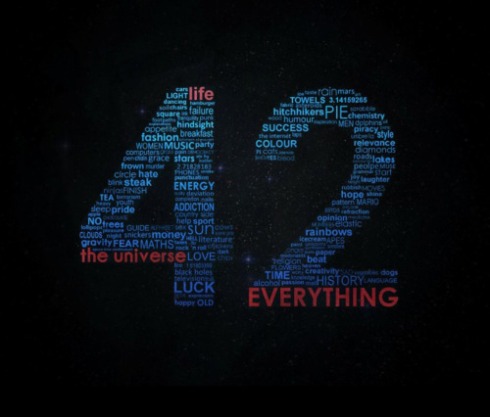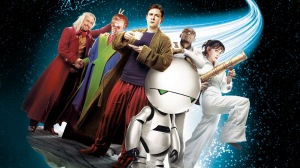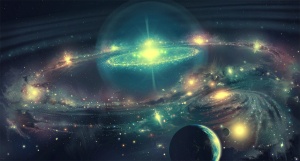One could attempt to simplify the epic know as Dune as the story of a boy’s ascension to manhood. This would be an insult to the immense and comprehensive universe that Frank Herbert has created for readers that spans out over close to eight hundred pages. There is an untold amount of depth and background history weaved into this novel. To attempt to condense this information into a paragraph or even two would be extremely difficult, but here are some basic details, so the following issues can be better understood in context. The story is set in a future world where space travel is common and controlled by a single ‘Spacing Guild’ and the population is spread out through many planets in the universe, who all answer to a supreme Emperor. The main character in the novel is Paul Atreides, the son of a duke. His mother Jessica is part of a secretive religious and political society called the Bene Gesserit who seek to control the outcome of the future universe through genetic selection. Most of the book takes place on the harsh desert planet of Arrakis, covered by sweeping sand dunes much like the ones we visited. There Paul is forced into manhood after the murder and overthrow of his father. He flees into the thought-to-be uninhabited deep desert to avoid being killed by his family’s sworn enemies, the Harkonnens. He is taken in by the original people of Arrakis, referred to as Fremen, and assimilates to their ways. During his journey he finds out he is the prophesized savior of their people and along his rise to power Paul discovers he possesses ‘the sight’ or the ability to see into the distant future. There are many more aspects and interweaved side stories that take place in this immense work, but these are the basic facts.
Deeper analysis of the novel brings to light the following question: is Herbert attempting to comment on, or even predict, future issues in our on world through a sci-fi alternate? There are obvious similarities between our world and the distant future of Dune. Firstly, water scarcity is a dispute shared by the novel and life here on Earth. A huge theme throughout the book is the complex influence of politics and religion, which humans are quite familiar with in today’s world. A third parallel is the importance the environment plays on habitability of a planet, which can even relate to our current issues of global warming.
It is common knowledge that water is necessary for life on Earth to survive, but the importance placed on water on the planet of Arrakis is tenfold. Is this intentional? Water is so essential that when someone dies, his or her body is processed to reclaim all possible water. This necessity is made clear early in the desert when a Fremen says the following: “Why did you not say at first it was a water matter?” (344). During this scene of one the men trying to protect Paul is attempting describe to a Fremen the urgency of the situation, but the Fremen does not understand until he describes it in terms of water. In many places on Earth water or at least potable water, is also of great importance due to scarcity. Countries throughout Africa and other impoverished nations struggle to supply enough drinkable water, but in America water is relatively accessible. It certainly seems that Herbert’s focus on water was intentional and was meant to reinforce how indispensable and, possibly, taken for granted the liquid is in our day-to-day lives.
There is a clear relation on the issue of habitability, due to the environment, on Earth and the desert planet of Arrakis, but did Herbert intend to predict planetary problems? The role the environment plays on Arrakis is a key point in the novel because the Fremen’s goal is to eventually turn the planet into a less hostile and more livable world through terraforming. This is a noble goal because it will create a world where future generations do not need to fight the desert to stay alive on a daily basis due to deadly conditions and giant sand worms. While people on Earth do not need to worry about being eaten by giant sand worms at any moment, the environment has become an increasingly heated issue. Scientists are pointing out the ramifications of CO2 emissions. Current models suggest that there will be no serious effect on the current generation, but that global warming could be detrimental for generations to come if a solution is not reached. On the other hand some believe that global warming is a natural cycle and will correct itself. Whether Frank Herbert was predicting environmental issues or not is not clear. He was without a doubt presenting the idea of environmental problems to the reader, and doing so in a way that leads him or her to consider the impact humans can have their living world.
The complex relationship between politics and religion in Dune is akin to the way the two interact in our world. Paul becomes the religious and spiritual chief of the Fremen people, but also their political leader. While it is commonly accepted that politics and religion are supposed to be separate in America due to the First Amendment, they are certainly entangled in Paul’s world. As Paul has a moment of clarity after escaping into the desert, “‘We’ll find a home among the Fremen,’ Paul said, ‘where your Missionaria Protectiva has brought us a bolt hole’” (319). Here Paul is referring to the prophecy the secretive Bene Gesserit have laced the universe with that predicts him as the savior of the Fremen people. This is the main reason the Fremen are even willing to consider taking him in, along with his mother. Without this religious influence Paul and Jessica would likely have been left to die in the desert, if not killed by the first Fremen they came across. In many other parts of the world, Iran for example, politics and religion are not separate and a political leader may also be a religious leader. Even though the two are said to be detached in America, many times religious preferences affect political decisions. By creating in-depth systems of politics and religion in the book, Frank Herbert is able to explore the issues of attempting to isolated religion and politics as well as their influence on each other. This creates a feeling the reader can relate to because of parallels here on Earth.
Frank Herbert’s Dune has many key issues that have similarities with ones here on Earth, which begs the question of whether or not he was attempting to comment on future problems he foresaw in our own world. Or maybe he wanted to just create a more complete universe where the reader felt at home. This is sure to be a topic of debate and only one that Herbert himself could indefinitely answer, but unfortunately he passed way almost thirty years ago. Therefore, it is left for the reader to interpret. In the end, the reason why he chose to include so many relatable aspects in the universe of Dune and our world is not necessary. What is though, is the fact that these similarities exist is. By including aspects of life humans can relate to, such as politics, religion, and environmental problems, he creates a comprehensive and more believable realm for the masterpiece known as Dune to unfold in. Regardless of the time difference of when the book was written and the current day, Dune still has the power to make readers think critically about issues in their own lives. If he was, in fact, commenting on issues in our own lives, a topic of further research to consider would be: are issues in our lives easier to view from an outside perspective?
Works Cited
Herbert, Frank. Dune. New York: Ace, 1990. Print.









